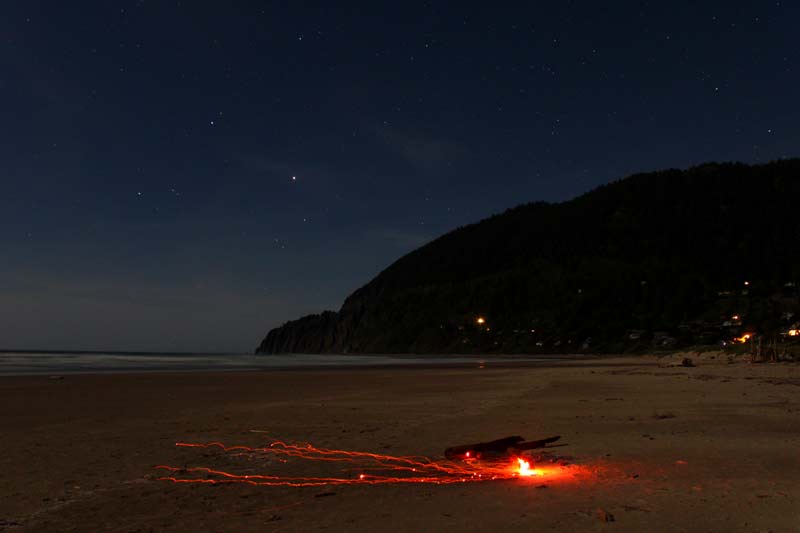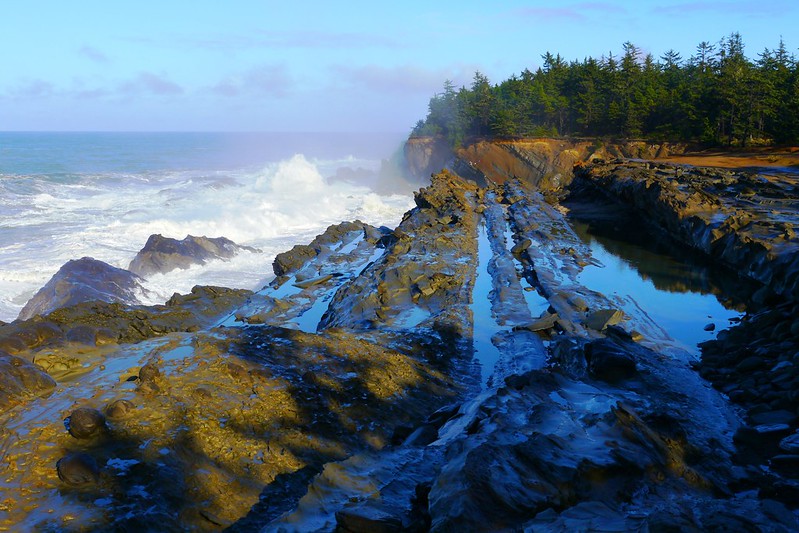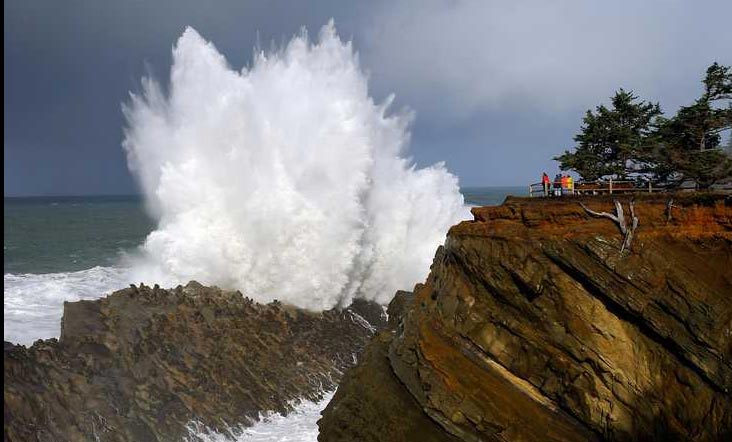Three Things You Should Never Do on the Oregon Coast
Updated Periodically
By Oregon Coast Beach Connection staff

(Oregon Coast) – It's all fun and games on the coastline until someone gets hurt. Or maybe they get pooped on by a crazed gull. (Photo: be careful of what you do with bonfires, as in this photo of Manzanita).
There is a lot of common sense that gets ignored by visitors to the Oregon coast, and much of that involves beach safety – which is fairly well publicized. But there are some rules about the beaches that don't get talked about much.
Here are three examples of seriously bad ideas when you're at the beach.

Do Not Feed the Seagulls. This seems a natural, but it's really bad for them, and it winds up having bad repercussions for humans. You'll notice more and more that local towns not only discourage this, but they're starting to outlaw it.
To begin with, according to agencies like the North Coast Wildlife Center near Astoria, human food is bad for them. The stuff that's worst of all for them is what humans usually give them: like fries, bread, chips or lunch meat. These kinds of food items can actually harm them as they affect egg development. Ultimately, they have absolutely no nutritional value for the gulls.
Seagulls can have their stomachs full of our food but literally starve to death.
By feeding them, you're also teaching them to not fear us or cars. This has bad consequences because they start to wander in and out of traffic and get hit. Even worse: they learn to hover near us and near human amenities, which makes for a lot of droppings in places you don't want. Most of the beach health alerts come from excessive bird feces fouling up city streams that feed into beaches.

Don't Ignore the Safety Signs. What seems like a no-brainer isn't, if you go by the statistics of people who ignore these signs and get hurt every year. “Do Not Go Beyond The Fence” and other similar warnings about where not to tread are there for a reason. These signs are not a license to make a daredevil out of yourself.
Case in point: the signs at the top of Cape Kiwanda were routinely ignored, resulting in two deaths in 2016 alone (a total of seven 2009 - 16). The area (pictured above) ventured into most often is the cove-like spot called the “punchbowl,” which looks relatively safe at a distance. But it isn't. Big waves come sweeping up there all the time, surprising the daredevils and they get washed out to sea.
Another problem area in the past has been the rocky shore at Yachats, where it's easy to think those big waves aren't out to get you, as they mostly crash quite a ways away. But venture too far into those dramatic, jagged rocky shelves, and even in calmer conditions the waves can snag you.
A memorial to a pair of high school students lost there and increased signage seems to have eased off the frequency of incidents there.

Photo Rick Obst/Flickr
Shore Acres State Park at Coos Bay and its lower shelf areas are also an issue. You'd think people would stay away from those spots when the waves get wild and towering right there, but they don't. Pictured here is one of those shelf areas in a slightly calmer mood. Note: if it's wet like this, that means large waves have swamped it previously. Then do not tread here.
Winter storms are often full of stories of people daring the wild tides, or those greatly underestimating what the waves are going to do. Especially if signs are posted that tell you to keep out of a spot, you are taking way too many chances by ignoring it. A good example was in the 2000's when a woman's car was engulfed by storm waves when she went beyond the warnings at a parking lot in Garibldi.
Don't Bury Your Bonfire. In spite of this being fairly common knowledge, visitors to the Oregon coast still manage to do this a lot. And every high season, a few – mostly kids – get hurt. Put your fire out with water and leave the remaining embers visible. That way no one will walk on them. (This is what happened in the photo at the top of the article, and it was photographed late at night, still shooting out sparks and somewhat hidden).
The rules for making bonfires are pretty simple. First, make sure there is no signage that says you can't make them. And when you do, build them far way from the vegetation line. The beaches are often windy places and it doesn't take much for an ember or two to go sailing into the nearby brush. Oregon Coast Hotels in these areas - Where to eat - Maps and Virtual Tours


More About Oregon Coast hotels, lodging.....
More About Oregon Coast Restaurants, Dining.....
Cannon Beach Lodging
Nehalem Bay Lodgings
Manzanita Hotels, Lodging
Three Capes Lodging
Pacific City Hotels, Lodging
Lincoln City Lodging
Depoe Bay Lodging
Newport Lodging
Waldport Lodging
Yachats Lodging
Oregon Coast Vacation Rentals
Oregon Coast Lodging Specials
LATEST Related Oregon Coast Articles
Likely just before dawn best hour but peak happens during daylight. Weather
Dark Sky Week is Prime Along Oregon Coast: Where and Where Not to Go
General guide to dark sky viewing from south to north coast. Astronomy
Sizable Price Drop, Deals in Lincoln City During Quiet of April on Central Or...
20 perc off at A1 Vacation Rentals across its roster, including Gleneden Beach. Lincoln City specials
Upcoming S. Oregon Coast Events Include Gem Show, History: Coos Bay, Bandon
May 6 talk at Coos History Museum, Mayfly Fest May 17, Bandon Rock / Gem Show June 7,8
Washington Coast Cleanup on April 19 - Coinciding with Oregon Coast's SOLVE E...
From the Puget Sound to Long Beach, alongside Oregon's cleanup. Washington coast events, Seaside events
Astoria's Riverwalk Gets New Lighting, More N. Oregon Coast Roadwork
Delays coming this summer, but the riverwalk has a new look. Seaside, Cannn Beach
April Gets Even Cheaper Midweek at Depoe Bay, Lincoln City: Oregon Coast Deals
Off-season rates plus more at Keystone Vacation Rentals. Depoe Bay lodging specials, Lincoln City hotel reviews, Newport hotel reviews
Washington Coast Begins Week of Clam Digs, April 12 Through 18
Long Beach, Twin Harbors, Mocrocks and Copalis at different times. Washington coast events
Back to Oregon Coast
Contact Advertise on BeachConnection.net
All Content, unless otherwise attributed, copyright BeachConnection.net Unauthorized use or publication is not permitted



















































